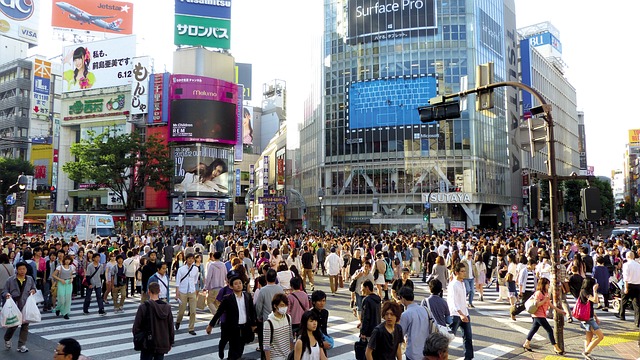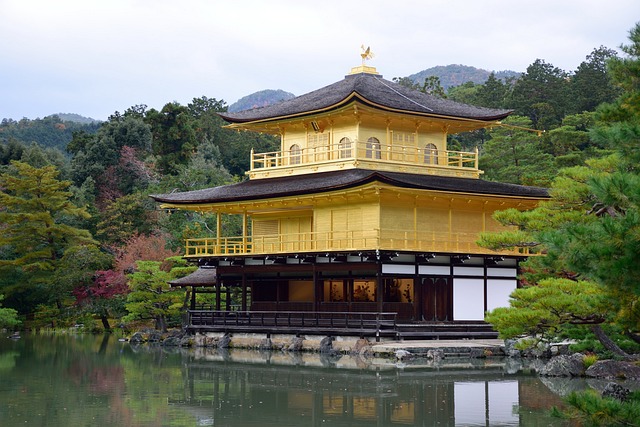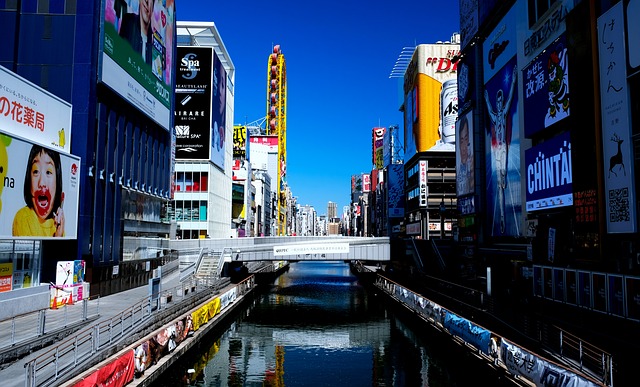Japan is a country where ancient traditions and cutting-edge technology coexist. With stunning landscapes, vibrant cities, and rich culture, planning a two-week trip can be overwhelming. In this guide, we’ll highlight must-see destinations in Japan that will make your travel experience unforgettable.
Table of Contents
ToggleExploring Tokyo: The Dazzling Capital

Tokyo, the bustling capital of Japan, is a must-visit destination for anyone traveling to the country. This dynamic city is a blend of the ultra-modern and the traditional. You can find towering skyscrapers with neon lights just a few blocks away from serene temples and gardens.

Start your journey in Shibuya, famous for the Shibuya Crossing, one of the busiest pedestrian intersections in the world. Spend some time shopping in the trendy stores or enjoying local cuisine in the area. Don’t miss a visit to the Meiji Shrine, nestled in a lush forest that offers a peaceful escape from the city’s hustle and bustle.
Another area worth exploring in Tokyo is Asakusa. Here, you can visit the historic Sensō-ji Temple, the oldest temple in Tokyo. A stroll through Nakamise Street, where you can find traditional snacks and souvenirs, provides an authentic taste of Japanese culture. Lastly, make sure to visit the Tokyo Skytree for the best panoramic views of the city.
Kyōto: The Heart of Tradition
Kyōto is often referred to as the heart of traditional Japan. With its stunning temples, beautiful gardens, and historical districts, it provides a glimpse into Japan’s past. A visit here is essential for anyone intrigued by art, culture, and history.

Begin your exploration with Kinkaku-ji, the Golden Pavilion, which is covered in gold leaf and surrounded by beautiful gardens and ponds. The reflective scenery is breathtaking throughout the seasons, making it a picture-perfect spot. Also, visit Fushimi Inari Taisha, famous for its thousands of bright red torii gates that lead up the mountain. This sacred site is not just visually striking; it offers a chance for a peaceful hike through nature.
Don’t forget Gion, a historic district known for its traditional wooden machiya houses and geisha culture. Strolling through its streets, especially in the evening, you might catch a glimpse of a geisha heading to her evening appointments. Enjoy a kaiseki meal, a traditional multi-course Japanese dinner, to experience the culinary side of Kyōto.
Osaka: The Culinary Capital
Osaka is known for its vibrant food scene, making it a must-visit destination for food lovers. Often called the “Kitchen of Japan,” this city is famous for its street food and local delicacies.
Start your food adventure in Dōtonbori, where you can taste famous Osaka dishes like takoyaki (octopus balls) and okonomiyaki (savory pancakes). The neon lights of this area create a lively atmosphere, especially at night, making it a perfect spot for dinner and entertainment.

Apart from food, Osaka has several attractions worth exploring. Visit Osaka Castle, a stunning symbol of the city surrounded by beautiful gardens. The castle offers stunning views from its top floor and historical exhibitions. The Umeda Sky Building is also a great place to visit for a panoramic view of the city, especially at sunset.
Hiroshima: A City of Peace
Hiroshima is a significant city in Japan’s history, known for its resilience and message of peace. A visit here is touching and educational, providing insight into the events that reshaped the nation.

Begin your trip at the Hiroshima Peace Memorial Park, which commemorates the victims of the atomic bombing. The Peace Memorial Museum offers comprehensive exhibits that tell the story of the bombing and its aftermath. The iconic Atomic Bomb Dome, a UNESCO World Heritage Site, stands as a haunting reminder of the city’s tragic past.
After reflecting in the peace park, take a ferry to Miyajima Island to see the famous Itsukushima Shrine, known for its floating torii gate. This beautiful shrine is set against a stunning backdrop of mountains and is particularly breathtaking at high tide. Miyajima is also a perfect place for hiking, with Mount Misen offering picturesque views.
Nara: Home to Sacred Deer
Nara might be small, but it is rich in history and charm. Located just a short train ride from Kyoto, it’s known for its friendly, free-roaming deer and ancient temples.
Visit Nara Park, where you can interact with the hundreds of deer that roam freely. These deer are considered sacred and are quite accustomed to human interaction. The park is home to Todai-ji Temple, which houses a gigantic bronze Buddha statue. The large wooden building is an architectural marvel and is listed as a UNESCO World Heritage Site.
Stroll through the beautiful gardens and visit the Kasuga-taisha Shrine, famous for its many stone lanterns. Nara is deeply rooted in Japan’s history and is the perfect day trip from Kyoto, offering a tranquil vibe that allows you to connect with nature.
Sapporo: The City of Snow
If you visit Japan during the winter season, Sapporo should be included in your itinerary. Known for its snow and the Sapporo Snow Festival, this city on the northern island of Hokkaido is full of winter charm.
During the Sapporo Snow Festival, held in February, you’ll see incredible ice sculptures that attract millions of visitors. Explore Odori Park, where many of these sculptures are displayed. Enjoy winter sports such as skiing in nearby resorts like Niseko, known for its powder snow.
In addition to winter sports, indulge in Hokkaido’s famous seafood and dairy products. Don’t miss trying Sapporo ramen, a local specialty that warms you up on cold days. The city’s markets, like the Nijo Market, are ideal spots to taste fresh seafood and fresh produce.
Hakone: The Hot Springs Retreat
If you’re looking for relaxation in stunning surroundings, Hakone is the destination for you. Famous for its hot springs (onsen) and views of Mount Fuji, it provides a serene escape from city life.
Spend your time soaking in an onsen, which is a traditional Japanese hot spring experience. Many inns and ryokans (Japanese-style hotels) offer private baths with views of nature. You can also take the Hakone Ropeway for views of sulfur hot springs and Lake Ashi.
Don’t miss the opportunity to take a pirate ship ride on Lake Ashi, where you can enjoy a unique view of Mount Fuji in the background. Hakone Open-Air Museum is another highlight featuring stunning outdoor sculptures blended beautifully with nature.
Conclusion: Embrace Japan’s Diverse Charm
Japan is a country that beautifully marries the past with the present, offering a wealth of experiences from city skylines to tranquil temples. A two-week trip provides ample time to explore its dynamic urban landscapes and serene countryside. Each destination reflects a unique aspect of Japan’s culture, history, and natural beauty.
So pack your bags and embark on an unforgettable journey to Japan. The friendly locals, delicious food, and stunning sights await to create memories that last a lifetime.
FAQs
1. What is the best time to visit Japan?
The best time to visit Japan is during spring (March to May) for cherry blossoms or fall (September to November) for beautiful autumn foliage. However, each season has its unique charm.
2. Do I need a visa to visit Japan?
Visa requirements for Japan depend on your nationality. Many travelers from various countries can enter Japan without a visa for short stays. Check with your local Japanese embassy for specific requirements.
3. Is English widely spoken in Japan?
While English is not the primary language, many Japanese people in urban areas and tourist sites can understand basic English. Signage in major cities is often bilingual.
4. How can I get around Japan?
The best way to get around Japan is through its extensive public transportation system. The Japan Rail Pass is a cost-effective option for long-distance travel across cities.
5. What is traditional Japanese cuisine like?
Traditional Japanese cuisine includes dishes such as sushi, sashimi, ramen, tempura, and kaiseki. Regional specialties vary, providing a rich culinary experience throughout Japan.






